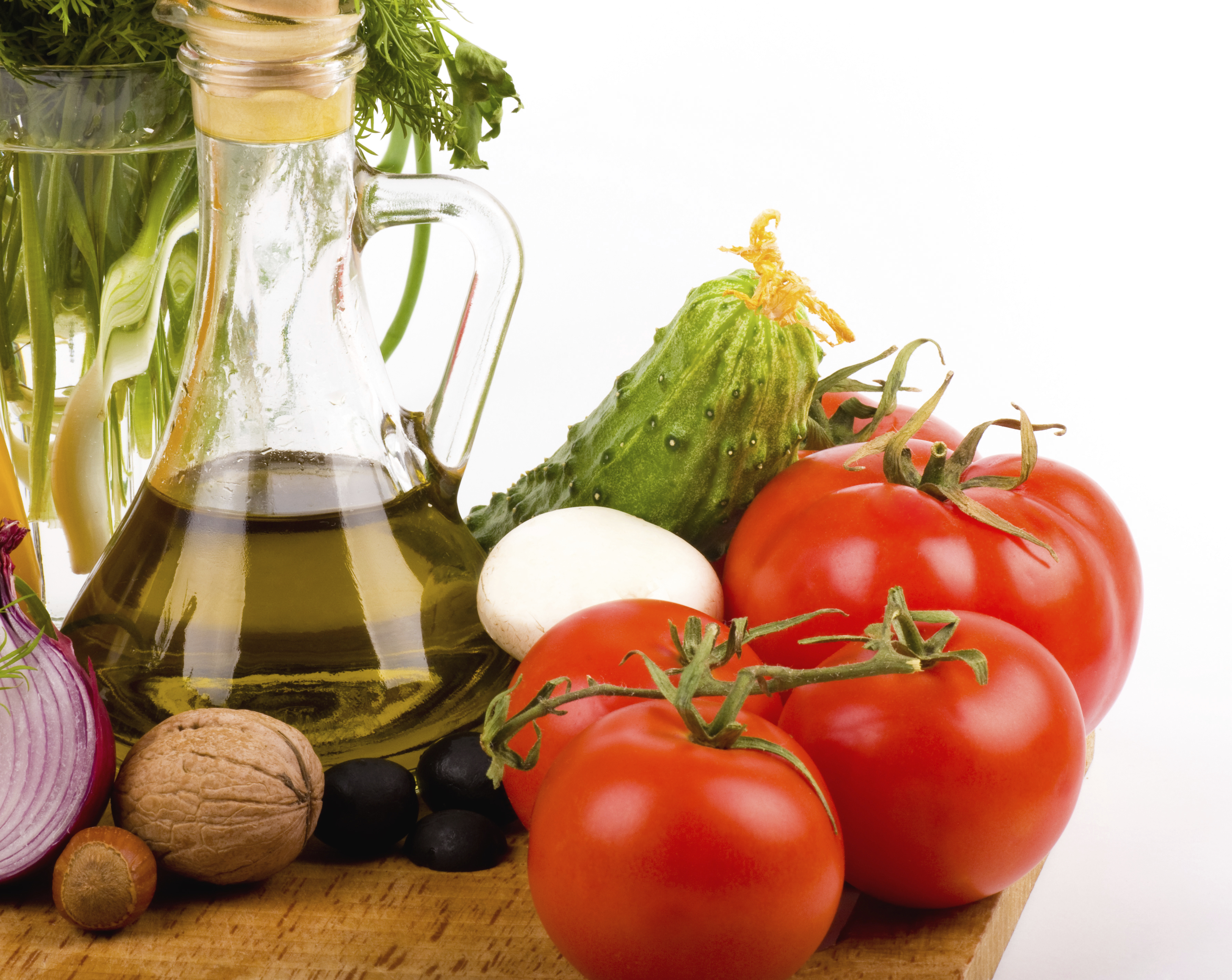
There is a mountain of high-quality research supporting a Mediterranean-style diet as the best diet for our cardiovascular health. But what does this diet actually look like, why does it work, and how can we adopt it into our real lives?
What is a Mediterranean diet?
The Mediterranean diet is not a fad. It is a centuries-old approach to meals, traditional to the countries bordering on the Mediterranean Sea. The bulk of the diet consists of colorful fruits and vegetables, plus whole grains, legumes, nuts and seeds, fish and seafood, with olive oil and perhaps a glass of red wine. There is no butter, no refined grains (like white bread, pasta, and rice), and very little red or processed meat (like bacon). There is also an emphasis on sitting down and enjoying a meal among family and friends, as well as avoiding snacking, and getting plenty of activity. It’s not just about the food: it’s a way of being.
What’s a Mediterranean-style diet?
The food part is similar to most other healthful diet approaches in that it’s plant-based. And the recipes do not have to be Italian or Greek, which is why I refer to it as a Mediterranean-style diet. Every meal should have vegetables and fruits as the base. Any grains should be whole grain, like quinoa, brown rice, corn, farro, or whole wheat. Legumes are an excellent source of plant protein, things like lentils, garbanzo, kidney, cannellini, or black beans. Nuts and seeds have protein and healthy fats, and olive oil provides even more healthy fat. Including fish and seafood is traditional, but not required. I advise people not to stress about dairy, poultry, and eggs; these are okay in small amounts. A glass of wine a day may be beneficial, but not for everyone, and there is no reason for non-drinkers to take it up.
Why does this way of eating produce such impressive health benefits?
In a recent study published in JAMA Network Open, researchers looked at data from over 25,000 women over 45 (with an average age of 55) and with no history of heart disease.
Using the baseline dietary questionnaire, a Mediterranean diet “score” was calculated. Basically, there was one point given for each of these nine main components: higher than average intake of fruits, vegetables, whole grains, legumes, nuts, fish, and healthy fats; healthy level of alcohol intake; and lower than average intake of red and processed meats. Participants were divided into groups based on low, medium, and high Mediterranean diet consumption (scores of 0–3, 4–5, and 6–9).
After 12 years average follow-up time, 1,030 participants had some kind of serious cardiovascular issue (including heart attack, angina with stent placement, peripheral vascular disease requiring intervention, or stroke). The women in the medium and high Mediterranean diet groups had significantly lower risk (23% and 28% lower, respectively).
Higher Mediterranean diet scores were also associated with lower body mass index and blood pressure, as well as more optimal lab data like lower inflammatory markers (high-sensitivity CRP), lower diabetes risk (insulin resistance), and a better lipid profile (higher HDL). These findings suggest the pathways through which the diet benefits the body: by decreasing inflammation and promoting healthy blood cholesterol and sugar levels.
How to “go Mediterranean”
Adopting the Mediterranean diet in our busy, high-tech world may seem daunting. But there are tips and tricks to change your eating habits and reduce your risk of heart disease.
My book, Healthy Habits for Your Heart, teaches you the basics of behavior change, as well as step-by-step methods to make these changes happen in your real life. Chapter 5, “Eat For Your Life: Nutrition Habits” takes you through the science-backed recommendations for adopting a heart-healthy, plant-based Mediterranean-style diet. One suggestion is:
Aim for eight servings of fruits and vegetables per day (4 to 5 cups)
Eight servings of fruits and vegetables could look like:
Breakfast: 1 cup of berries
Lunch: 2 cups of lettuce + 1/2 cup tomatoes + 1/2 cup cucumbers + an orange for dessert
If you wanted to get to 10 servings, then add:
Dinner: 1 cup broccoli + 1/2 cup diced peppers + 1/2 cup snow peas (in a stir fry)
Tips to make the habit stick
- Start with at least one serving of fruits and/or vegetables with every meal and snack, and increase over time to two or three. You’ll be up to 10 in a matter of weeks!
- It’s fine to use frozen fruits and vegetables. High-quality berries, tropical fruits, and mixed vegetables are cheaper than fresh, and can be bought in bulk from the grocery store and stored in the freezer for long periods.
- Make breakfast with two (or more) servings of fruits and/or veggies. This gets the good stuff in early in the day. Try my Filling Fruit and Nut Bowl with Greek Yogurt.
- Free meal tracker apps like MyFitnessPal or Dr. Michael Greger’s Daily Dozen app can help you get your 10 servings of fruits and veggies daily.
